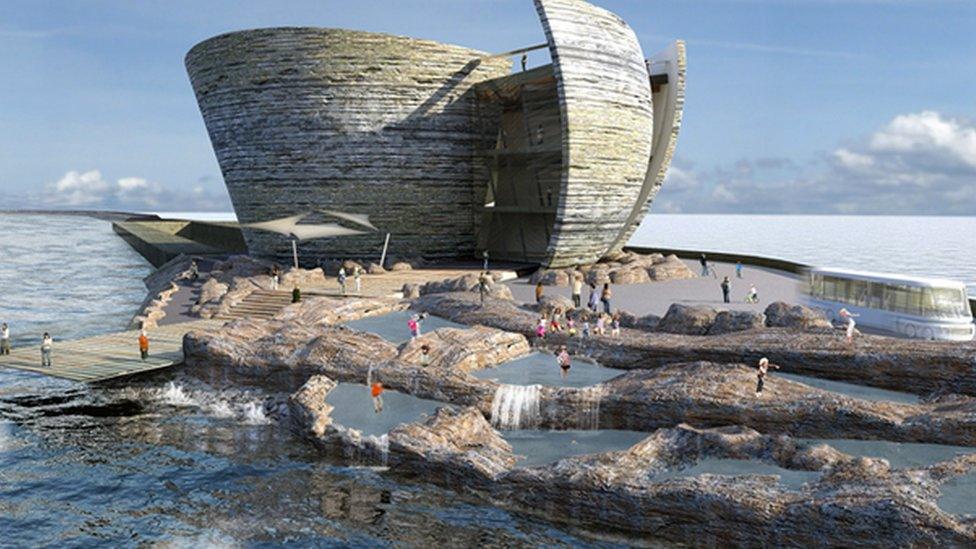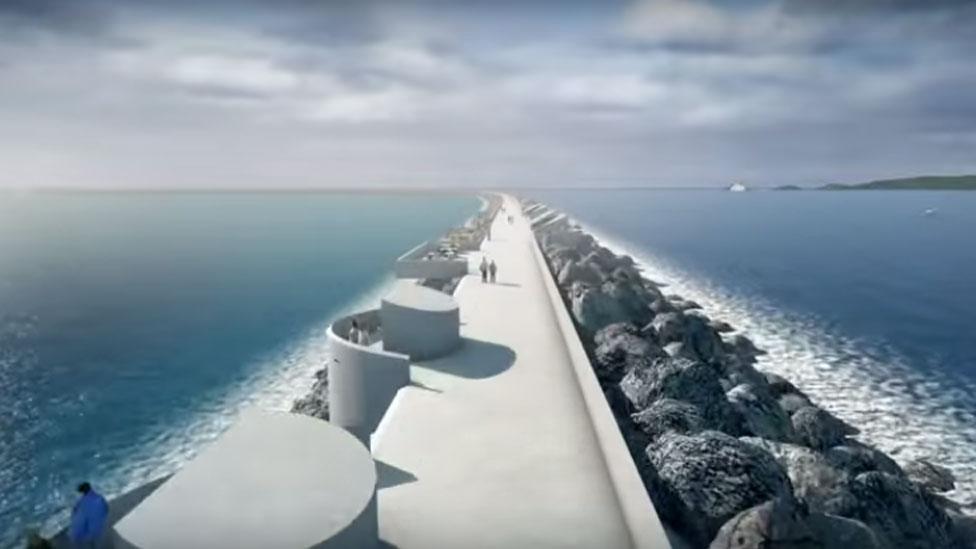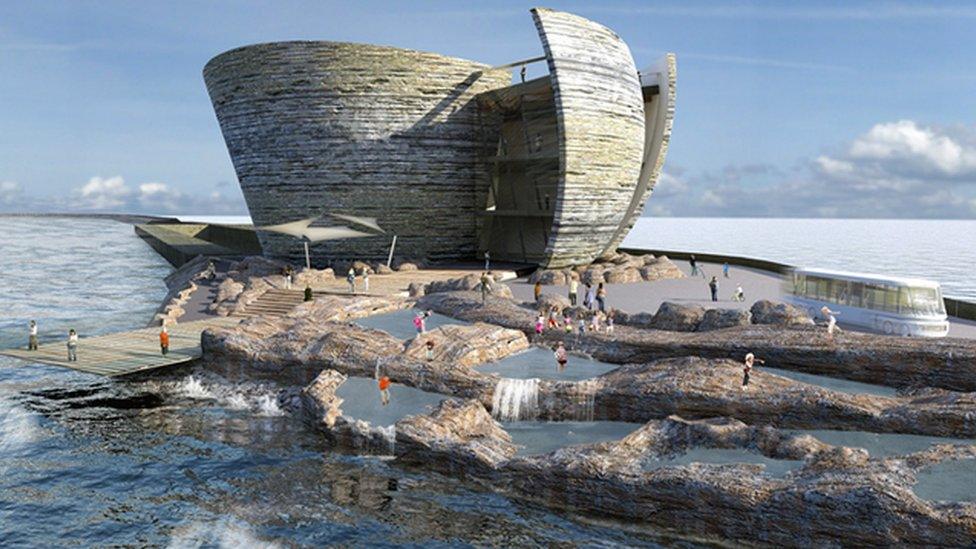Analysis: Is Swansea tidal lagoon dead in the water?
- Published

Nearly 18 months after an independent review into tidal energy in the UK reached its conclusions and laid the ground for a £1.3bn pioneering lagoon in Swansea Bay, we are still waiting for a UK government response.
That hardly suggests that the UK Government shares review head Charles Hendry's positivity for the project or that of former Chancellor George Osborne and former prime minister David Cameron.
Support and scepticism for Tidal Lagoon Power's (TLP) plans does not fall along party political lines.
But it does feel as if it has fallen out of favour with No 10 and there are pro-tidal and anti-tidal groups battling it out amongst civil servants in the department of Business Energy and Industrial Strategy (BEIS).
The Welsh Secretary Alun Cairns has reiterated the that the tidal project "must be affordable," which all reasonable people would agree with.
However, an email leaked to the BBC suggests that Mr Cairns is in fact more critical of it, especially the financial case. He said: "No decision has yet been taken and I have been an advocate from the outset but numbers are awful - twice the price of nuclear, without the prospect of any significant savings from lessons learned on first."
Hendry, a former energy minister, concluded that the lagoon would add "less than a pint of milk" a year to people's bills for 30 years and make a "strong contribution" to the UK's energy supply and would bring "significant economic opportunity".
Q&A: What are the Lagoon's sticking points?
Jones offers £200m to get lagoon built
Email reveals concerns at cost
'We will not give up' vows council leader
So are the figures "awful "and how do they add up on economic grounds?
The lagoon is expected to cost £1.3bn and would take three years to build.
The main funding would be from two British financial institutions, Prudential's InfraCapital and InfraRed Capital Partners. In addition to that Macquarie Capital ( Europe) Ltd is advising debt funding. The UK Government is not being asked to put any money into the building of the project.
Apart from that, the project is privately funded including an investment of around £10m from the Gupta family, which owns Liberty Steel and Simec, which runs Uskmouth Power station in Newport.
The sticking point is the cost of electricity it would produce.
So would the electricity from the Swansea Bay Tidal be "twice as expensive" as nuclear?
What is being debated is the guaranteed price - you might hear it called the "strike price" - agreed by the UK government so the company can plan ahead and not be dependent on changing wholesale prices.
TLP is adamant that it can produce electricity at a price in line with nuclear energy.
It says that in 2016 it offered a price of £89.9/MWh - just below the Hinkley nuclear strike price of £92.50/MWh at 2012 prices, for 35 years, rising annually in line with inflation.
It has now emerged that the Welsh Government's offer in January of "substantial investment" - or commercial loan - is worth £200m and it is looking to work with the UK government to find a solution on the price for the electricity it generated.
Swansea Council's leader called it "game changer" and said if the deal was "good enough for nuclear in England it should be good enough for tidal in Wales."
TLP also argues that the Swansea lagoon is a "pathfinder" project and we will really only see the benefits once a network of lagoons are established around the coast. So once the technology is scaled-up to the size proposed at Cardiff/Newport and Colwyn Bay, the price would fall significantly.
Hendry referred to this step-up approach in his review, believing the smaller pathfinder project needed to be operational before we moved to larger scale projects.
TLP chairman Keith Clarke said on Tuesday: "It's not about Swansea. It's about the large lagoons. The large lagoons will be comparable to wind."

TIMELINE:
2003: Plans first emerge for a £30m tidal power project in Swansea Bay from a green energy charity
2006: Tidal Electric Ltd prepares a scoping report for a lagoon to take the project on but it is put on hold.
2012: Tidal Lagoon Power unveils its ambition to develop a breakwater and power generation.
2013: TLP starts developing its plans.
2014: Plans submitted to Planning Inspectorate with a cost of £850m
2015: Proposals get backing of UK Government, subject to subsidy agreement - hope it could be operational by 2018.
2016: Report warns of impact on fish. Charles Hendry appointed to lead independent review into £1.3bn lagoon's viability
2017: Hendry review backs the lagoon as a "no regrets" option but UK Government is still to decide.
2018: Delays, mostly believed to be over arguments over value for money. Welsh Government also offers substantial investment.

Watch Tidal Lagoon Power's video of how the turbines would work
TLP said that "the noises from Government are resoundingly quiet" and they have not spoken to Whitehall civil servants for 12 months.
Even if the UK Government said no, could the project still go ahead with a different model?
The people leading TLP have taken knocks in the past and remained optimistic and have managed to keep investors in place.
What is unchartered is whether Swansea Council, Welsh Government and the city region could together provide the extra support to get it off the ground.
But up until now, the system has revolved around auctions to bid to generate into the grid and a guaranteed price in return. So this would take a huge shake-up in how the electricity market currently works in the UK.
- Published5 June 2018

- Published5 June 2018

- Published10 January 2018
